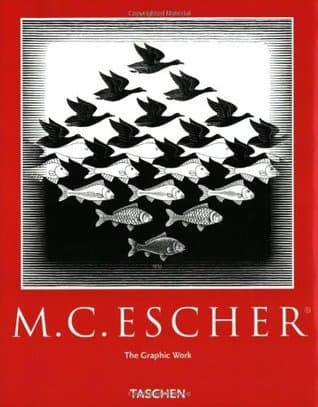
Book Review Summary: M.C. Escher: The Graphic Work
Introduction
M.C. Escher: The Graphic Work is a captivating book that delves into the world of the renowned Dutch graphic artist Maurits Cornelis Escher. Escher, known for his mathematically inspired woodcuts, lithographs, and mezzotints, presents the reader with impossible constructions, explorations of infinity, architecture, and tessellations. This book, part of TASCHEN's Basic Art series, offers a comprehensive overview of Escher's life and oeuvre, providing insight into his cultural and historical importance. With approximately 100 illustrations and explanatory captions, readers are treated to a visual feast that showcases Escher's creative genius.
About M.C. Escher
Maurits Cornelis Escher, better known as M.C. Escher, was a Dutch graphic artist born in 1898 in Leeuwarden, Netherlands. He studied at the School of Architecture and Ornamental Design in Haarlem from 1912 to 1922, where he received guidance from S. Jessurun de Mesquita, who significantly influenced his artistic development. Escher lived and worked in various countries, including Italy, Switzerland, and Belgium, before returning to the Netherlands, where he passed away in 1972. His artwork often features impossible constructions, architectural explorations, and mathematical concepts that challenge our perception of space and time.
Analysis of Views
-
Intriguing Illusions: Readers appreciate the structurally unthinkable worlds created by Escher, which challenge their sensory perception and present the impossible as if it were a law of nature. The dimensional and perspectival illusions in his artwork leave them in awe.
-
Mathematical Inspiration: Many readers find Escher's mathematically inspired artwork fascinating. His use of geometry and mathematical concepts adds an extra layer of depth and complexity to his creations, making them both visually stunning and intellectually stimulating.
-
Timeless Appeal: Escher's artwork has a timeless quality that resonates with readers across generations. The simplicity and elegance of his designs, combined with the intricate patterns and optical illusions, make his work enduringly appealing.
-
Repetition and Patterns: Escher's use of repetition and patterns in his artwork is another aspect that captures readers' attention. The repetitive nature of his designs creates a rhythm that draws the viewer in and encourages them to explore the intricate details of each piece.
-
Challenging Perception: Escher's artwork challenges our perception of reality and forces us to question our understanding of space and time. His ability to create impossible constructions and manipulate perspective creates a sense of wonder and curiosity in the viewer.
Reasons for Recommendation
-
In-Depth Exploration: The book provides readers with an in-depth exploration of Escher's life and work, offering a comprehensive overview of his artistic development and cultural significance. This makes it an ideal resource for those interested in learning more about Escher's artistic journey.
-
Visually Stunning: The book features approximately 100 illustrations with explanatory captions, allowing readers to appreciate the beauty and intricacy of Escher's designs. The visual aspect of the book is a significant reason why it is recommended by many readers.
-
Engaging Introduction: The introduction by M.C. Escher himself adds an extra layer of authenticity and personal insight into his work. His account of how he creates his pieces and his thoughts on the development of his style make for an engaging read that enhances the overall experience of exploring his artwork.
Conclusion
M.C. Escher: The Graphic Work is a must-read for anyone interested in exploring the world of Maurits Cornelis Escher, the renowned Dutch graphic artist known for his mathematically inspired woodcuts, lithographs, and mezzotints. Through its comprehensive overview of Escher's life and oeuvre, along with its visually stunning illustrations and engaging introduction by the artist himself, this book provides readers with a captivating journey into the realm of impossible constructions, architectural explorations, and optical illusions. Whether you are a seasoned fan or a newcomer to Escher's work, M.C. Escher: The Graphic Work is sure to leave you in awe of his creative genius and challenge your perception of space and time.